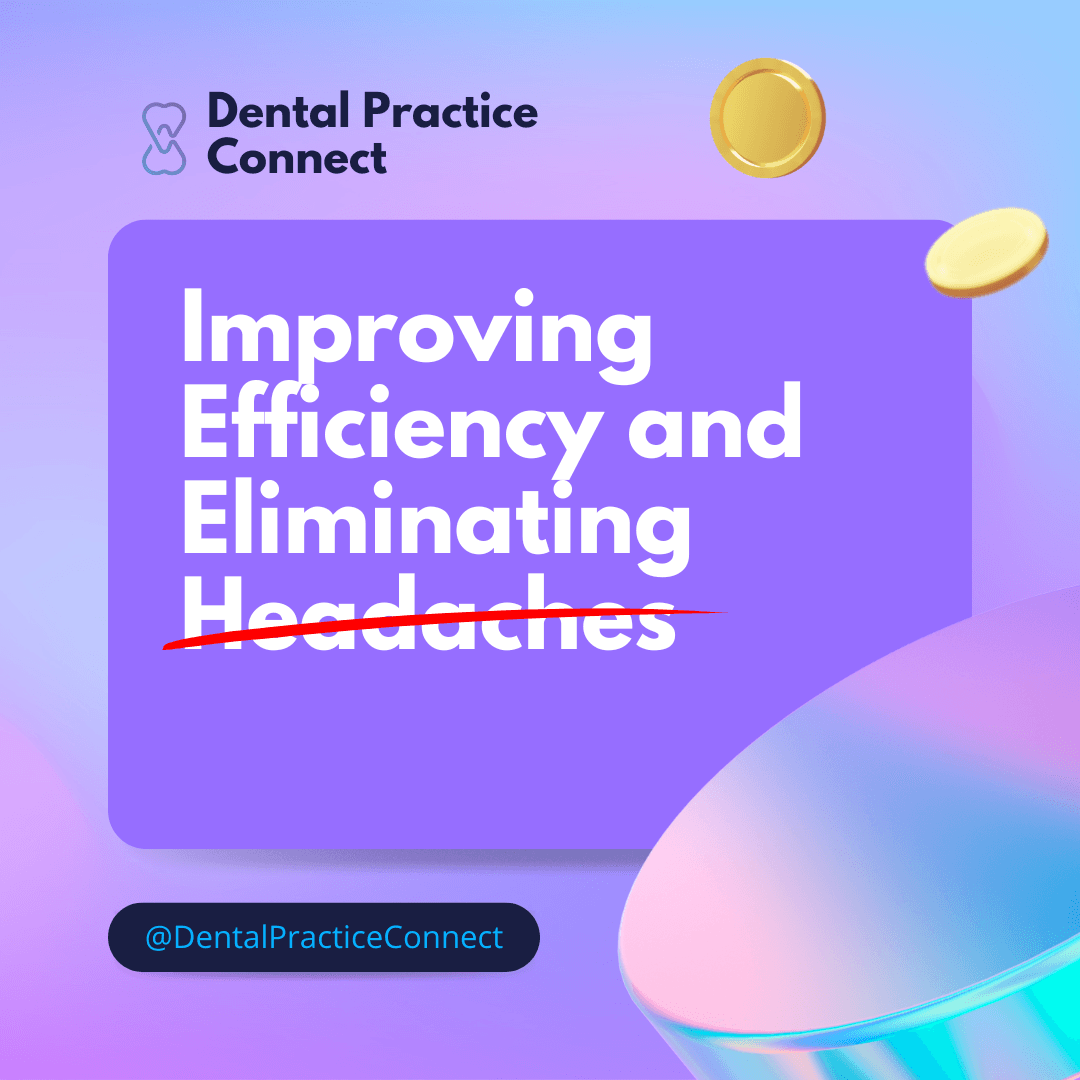- Knowledge Base
- Marketing a Dental Practice For Sale
Marketing a Dental Practice For Sale

Leslie George
2025-06-17
9 mins
Share

Introduction
Marketing your dental practice for sale isn’t as simple as putting up a “For Sale” sign. It’s a strategic process that balances visibility with confidentiality, depending on your goals and market conditions. Whether you're listing openly or discreetly, finding the right buyer means understanding where and how to advertise, what materials to prepare, and how to qualify interested parties. This guide walks you through the different marketing approaches, types of buyers, and how to present your practice in the best possible light—so you can attract the right buyer while protecting the value of what you’ve built.
Open Listings versus Confidential Listings and Buyer Vetting
There are multiple ways to market and advertise your dental office for sale. The two most common methods are through Open Listings or Confidential Listings. Open Listings are those where the seller will openly describe their dental practice including the name, location, and top level key performance indicators. Closed or Confidential listings will simply say “Dental Practice For Sale” and the approximate area of the office alongside those metrics. This is used in cases where the seller does not want their competition to know that they are planning to transition, usually in smaller markets or by practices that rely heavily on referrals.
In any case, buyers don’t buy offices sight unseen. The buyer vetting process usually requires potential buyers to sign a NDA or Non-disclosure agreement prior to seeing any practice details. Reports are usually sent over to the buyer anonymously until the buyer gives qualification records to the seller. Usually this will include the doctor’s license information, a pre-approval letter from a lender if it is a private buyer, and a Letter of Intent to purchase the practice
Crafting a Practice Prospectus or Confidential Information Memorandum (CIM)
Confidential Information Memorandums, or CIMs, are information packets about the practice for sale. They will usually include a standardized set of information such as the practice name, location, demographics, staffing chart and pay rates, and other performance information regarding the practice. It will also include photographs of the office and a background of the selling doctor and associated team.
Advertising Platforms and Channels
Doctors can choose to market and advertise their practice across several different channels. The most common choices are described below from the widest to most narrow reach.
- Broker Websites / Email Blasts
- Brokers will market practices directly to the public and send pro-forma information to their network. This results in the widest distribution of buyer reach possible.
- Facebook Groups or Other Private Networks (CPA’s, Lawyers)
- Many professionals host private groups that can be used to market practices for sale either for free or a nominal charge. This is great if you are a niche practitioner or in a small market area.
- Word of Mouth
- This is the simplest and most efficient way to market if you are looking for an individual buyer with a small buyer pool. Although it usually will not result in the highest price, you may end up with a buyer that will be the easiest to transition.
Identifying and Qualifying Buyers
Types of Buyers: Individuals and Dentist Partners vs. DSO
There are multiple types of buyers for a dental office and motivations, pros, and cons vary for each type. The buyers can be summarized into the following groups, Individuals, Partnership Buyers, and Dental Service Organizations or DSOs. There are many factors that influence who you might want to market to. Some considerations are below
- Individual Buyers
- Motivation
- Individual Dentist Buyers usually want to purchase an office to own and operate themselves. These buyers tend to be younger dentists that are looking for cash flowing operations that match their skill set. They want to turn from associate to owner and are willing to put in the effort.
- Pros
- Speed of Sale - These types of buyers want to find the best type of office for their own working style. When they find the right fit they are ready to pounce and typically don’t need as much due diligence and negotiation as other buyer types.
- Speed of Transition - This type of buyer will likely only require 3-6 months of transition support from the previous seller. They want to retain the patients and staff, but want to become the leader in the practice quickly.
- Cons
- Repetitiveness - There will be several individuals that will see under the hood of your practice. You will need to be ready to share documents, sign paperwork (NDAs), and entertain many questions.
- Pricing - You will typically not be able to receive top dollar for your office when selling to an individual. This is typically due to lending constraints and a shortened transition time period.
- When to Use
- This buyer type is great to target for sellers that want to wind down their operations quickly. The causes could be retirement or another life event that drives that decision.
- You can also use an individual buyer if you are deeply concerned with patient interest and retention. Using an individual buyer lets you vet the buyer and make sure they’re a good fit for your office.
- Motivation
- Dentist Partners
- Motivation
- Partnership buyers, whether 1 or many, want to buy in to a practice where they feel they will be able to increase the total amount of dentistry completed. This can be done by taking a portion of the selling doctor’s production or by creating a new product line inside of an existing practice.
- These buyers want an office with systems and management in place so that they can go directly to work building business.
- Pros
- Increased Practice Value - Adding another doctor with an equity stake in the business increases the value of the office through 1) more production, 2) increased management presence, and 3) decreasing risk
- Cons
- Long Process - When adding a partner, it will take a long time to understand how they work, their skillset, and “Fit” with the practice. You may go through 2-3 potentials before finding the right person.
- When to Use
- This is great for doctors that want to expand their office and also take some management burden off of their shoulders. By going this route, you will also typically retain cash flows from office profit greater than with other buyer types.
- Motivation
- Dental Service Organizations (DSOs)
- Motivation
- DSOs want to purchase your practice mainly to grow their own businesses by adding your offices cash flow. The common belief is that they can introduce cost savings and revenue growth through their own internal tools and processes that you as an individual business owner couldn’t do without scale.
- Pros
- Structure - Typically DSO’s will come with a management team that can help with the managerial activities of a dental office. This can range from recruiting
- Higher Total Payment - DSO’s offer a potential for a higher total payment through their layer
- Opportunity to De-Risk - By receiving a higher payment upfront, you are able to pull forward future cash flows at a tax advantaged rate, effectively reducing risk from future years.
- Cons
- Variation of Strategy - There are multiple types of DSO’s with strategies ranging from pure aggregation of cash flow to ones focusing on fixer-uppers.
- No Day to Day Support - A common pain point of partnering with DSOs comes from the idea that the DSO will manage operations at the practice level. They will not. A Dental Support Organization is designed to support managerial tasks, not operational tasks.
- The doctor owner will remain in charge of practice level management. This is also why DSO’s pay a higher multiple than other buyers
- Variability of Pay - Since DSO deals typically come with either earnout or stock provisions, it is not guaranteed that you will receive the total
- When to Use
- This sale type is ideal for doctors with anywhere from 5-7 years left of working life, or for a younger doctor that wants to de-risk their life.
- Motivation
Practice Tours and Buyer Meetings
What Buyers Look for in a Walkthrough
Any potential buyer will want to physically see the practice prior to purchase. They will be looking at the exterior of the practice for attractiveness, traffic patterns, co-located businesses, and accessibility. The buyers will look at the interior of the business to evaluate the age of equipment, fixtures and furnishings, technology in place, and orderliness of the office. A buyer, just like a patient, can tell a lot about the management of an office from a visual inspection. Hint, a clean front desk, lab, and sterilization area go a long way to increase practice value.
Managing Confidentiality During Visits
Typically a site walkthrough will be completed only after an NDA is signed. The NDA will restrict the buyer from spreading the word that your particular office is for sale. Walkthroughs are also usually done after-hours, so the current staff and any associate doctors will be unaware of the sale.
Conclusion:
How you market your dental practice can make or break your sale. From choosing the right listing type to knowing your ideal buyer—individual, partner, or DSO—it all comes down to alignment. A clear, well-prepared Confidential Information Memorandum, thoughtful buyer vetting, and strategic use of advertising channels will help ensure you get the right eyes on your practice. Combine that with a polished walkthrough experience and solid confidentiality practices, and you’ll be in the best position to secure a smooth, successful transition on your terms.
NextStep: Deal Structure and Offer Evaluation

Leslie George
Founder, Dental Practice Connect
Leslie George is a seasoned finance and operations professional with cross-industry experience. Over the past six years, he has dedicated his work to helping dental practices achieve operational excellence. All while building a meaningful, balanced life for his wife and children.
Share
Our Recent Knowledge Base
Explore real-world success stories showcasing innovation, sustainability, and efficiency.








